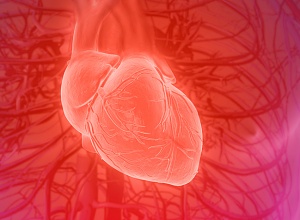One in five high-risk patients undergoing major non-cardiac surgery will develop one or more heart complications within a year, according to research published in the European Heart Journal – Acute Cardiovascular Care, a journal of the European Society of Cardiology.
“Our study reveals a greater likelihood of having heart problems or dying after non-cardiac surgery than has been recognised to date,” said study author Dr Christian Puelacher of the University of Basel, Switzerland, in an ESC article published on 15 October 2020.
“Patients are also at risk for a longer period than was previously thought.”
High risks
The study was conducted in high-risk patients, which included people aged 65 to 85, and those aged 45 to 64 with cardiovascular disease (coronary artery disease, peripheral artery disease or prior stroke).
All patients had non-cardiac surgery which required them to stay in hospital at least one night afterwards. The types of procedures included visceral, orthopaedic, trauma, vascular, urologic, spinal and thoracic surgery.
“People who undergo major surgery are increasingly old and have other diseases, and these are the patients we focused on in our study,” said Puelacher. “By providing information on postoperative complications, our research provides opportunities to make surgery even safer.”
More than 300 million surgeries are performed worldwide each year. Despite the advantages, surgery can trigger cardiac events including heart attacks, heart failure, heart rhythm disturbances and death.
Previous research has shown that nearly three-quarters of patients who die after surgery were never admitted to critical care, suggesting that their risk was unrecognised.
In addition, some complications go undetected because there are no symptoms – for example, patients who have a heart attack soon after surgery may not have chest pain because of pain medications. These asymptomatic heart attacks put the patient at the same risk of dying as those with symptoms.
The study
The study included 2,265 patients. The average age was 73 years and 43% were women. Patients were followed for one year after surgery for heart attacks, heart failure, heart rhythm disorders, and death due to cardiovascular disease. To detect asymptomatic heart attacks, all patients had serial measurements of troponin while in hospital – this protein is elevated in the blood when the heart muscle is injured.
Approximately one in seven patients (15%) had at least one heart complication within 30 days. The 30-day incidence of heart complications was highest in patients who had thoracic surgery (22%), followed by vascular surgery (21%) and trauma surgery (19%). One in five patients (21%) had at least one heart complication within one year.
“This was one of the first studies to monitor patients for asymptomatic heart attacks after surgery,” said Puelacher. “These patients were at greater risk of subsequent events. One-third of patients who had an asymptomatic heart attack went on to have at least one more heart complication, compared to just 10% of those who did not have an asymptomatic heart attack.
“Our study suggests that measuring troponin levels before surgery and for two days afterwards could identify these patients and provide an opportunity to prevent further complications and death.”
Most complications occurred within the first 30 days after surgery, and in particular within the first week. But the investigators identified a vulnerable period of up to five months.
Puelacher said: “Our results indicate that this high-risk patient group has an elevated likelihood of having an adverse cardiac event for three to five months after major surgery.”
He noted that the study did not investigate what patients can do to improve their outcomes. But he said: “Surgery is a process rather than a quick fix. Do not postpone your surgery, but if there is time and you want to prepare, quit smoking, be physically active and eat healthily so your body is in better shape.”
Incidence of major adverse cardiac events following non-cardiac surgery
European Heart Journal. Acute Cardiovascular Care. Published on 14 October 2020
Authors
Lorraine Sazgary, Christian Puelacher, Giovanna Lurati Buse, Noemi Glarner, Andreas Lampart, Daniel Bolliger, Luzius Steiner, Lorenz Gürke, Thomas Wolff, Edin Mujagic, Stefan Schaeren, Didier Lardinois, Jacqueline Espinola, Christoph Kindler, Angelika Hammerer-Lercher, Ivo Strebel, Karin Wildi, Reka Hidvegi, Johanna Gueckel, Christina Hollenstein, Tobias Breidthardt, Katharina Rentsch, Andreas Buser, Danielle M Gualandro, Christian Mueller and BASEL-PMI Investigators
Abstract
Major adverse cardiac events (MACE) triggered by non-cardiac surgery are prognostically important perioperative complications. However, due to often asymptomatic presentation, the incidence and timing of postoperative MACE are incompletely understood.
Methods and results
We conducted a prospective observational study implementing a perioperative screening for postoperative MACE [cardiovascular death (CVD), acute heart failure (AHF), haemodynamically relevant arrhythmias, spontaneous myocardial infarction (MI), and perioperative myocardial infarction/injury (PMI)] in patients at increased cardiovascular risk (≥65 years OR ≥45 years with history of cardiovascular disease) undergoing non-cardiac surgery at a tertiary hospital.
All patients received serial measurements of cardiac troponin to detect asymptomatic MACE.
Among 2265 patients (mean age 73 years, 43.4% women), the incidence of MACE was 15.2% within 30 days, and 20.6% within 365 days. CVD occurred in 1.2% [95% confidence interval (CI) 0.9–1.8] and in 3.7% (95% CI 3.0–4.5), haemodynamically relevant arrhythmias in 1.2% (95% CI 0.9–1.8) and in 2.1% (95% CI 1.6–2.8), AHF in 1.6% (95% CI 1.2–2.2) and in 4.2% (95% CI 3.4–5.1), spontaneous MI in 0.5% (95% CI 0.3–0.9) and in 1.6% (95% CI 1.2–2.2), and PMI in 13.2% (95% CI 11.9–14.7) and in 14.8% (95% CI 13.4–16.4) within 30 days and within 365 days, respectively.
The MACE-incidence was increased above presumed baseline rate until Day 135 (95% CI 104–163), indicating a vulnerable period of 3–5 months.
Conclusion
One out of five high-risk patients undergoing non-cardiac surgery will develop one or more MACE within 365 days. The risk for MACE remains increased for about 5 months after non-cardiac surgery.
[link url="https://www.escardio.org/The-ESC/Press-Office/Press-releases/Risk-of-heart-complications-after-major-surgery-is-higher-than-previously-thought"]ESC material[/link]
[link url="https://academic.oup.com/ehjacc/advance-article/doi/10.1093/ehjacc/zuaa008/5923173?searchresult=1"]Incidence of major adverse cardiac events following non-cardiac surgery[/link]

